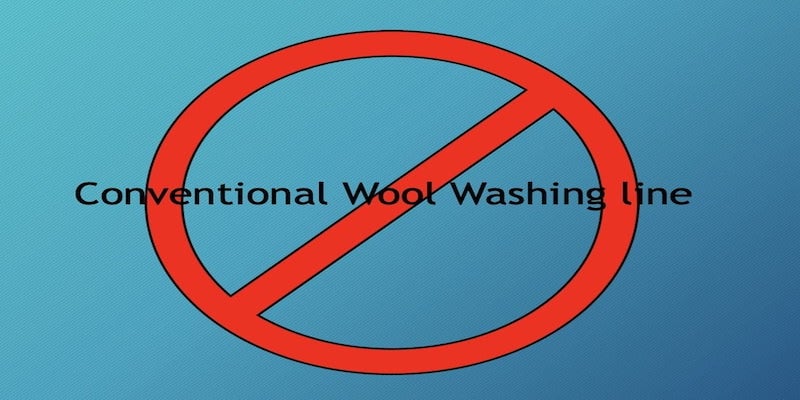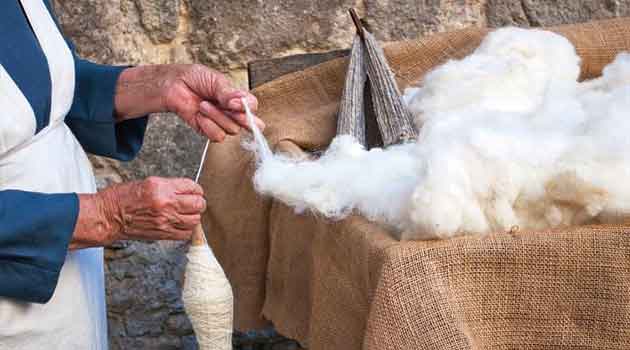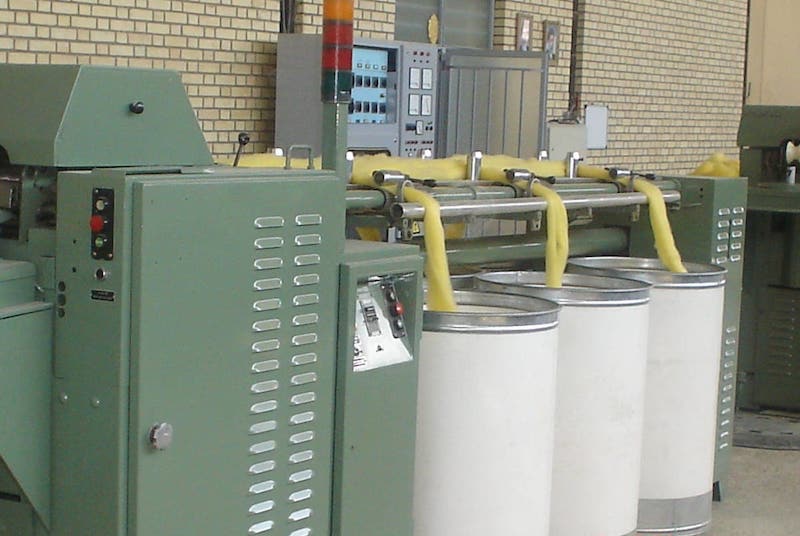Interview with Mr Zandipour – Wool fiber Expert
By: Behnam Ghasemi – Kohan Textile Journal / Translate by Mahlagha Sadoughi
Wool fiber is one of the strategic products in the world and a blessing that has been given to human beings to use it for well-being and comfort. But unfortunately, the story of wool fiber in Iran is very sad and is the same as this very beautiful poem of Rumi that says “Gratitude (to God) for (receiving) the bounty, will increase your bounty; Denial of the bounty will cause you to loose what you already have”.
Denial of the blessings of Iranian wool has led to burn a significant part of Iranian sheep wool, burying them underground, or selling wool fiber to Iraq and Afghanistan at a very cheap price in the current situation. Hence, Iranians who love woollen carpets are deprived of having a well quality wool carpet that is environmentally friendly and without any harmful materials for the body, and their houses are full of acrylic, polyester, and polypropylene carpets. Therefore, all kinds of ailments and diseases which may enter into our bodies or our children’s body in long term, lies in wait.
If Iran had not wasted the Iranian wool, which is the best and most suitable fiber in the world for the production of carpet yarn, today, high-quality woolen machine-made carpets would not the only carpet in our homes, but we would be proud of it as a valuable export product to all over the world.
This is an interview with one of the Iranian wool researchers, who has spent more than 22 years of his life in this field. He is one of the graduates of electronic engineering who succeeded in obtaining a very special method for processing wool and producing carpet yarns made of Iranian sheep wool, and has been patented his system in the Swiss Invention Center.
My last conversation with him was for 9 years ago, when he was planning, with a lot of enthusiasm, to implement this patent in Iran. But now, after years and the lack of attention, he is going to migrate and start this system in Swiss and Germany. This system is installed in Germany and Sweden. It is an interesting story:
Mr. Zandipour, how did you become interested in Iranian wool and its use in machine-made carpets?
During and after the Iran-Iraq war, I worked as an electronics engineer for a company that represented textile lines and machines ranging from fiber production to weaving and nonwovens. Our team had the responsibility to install operating textile production lines and industrial automation parts in many Iranian textile factories, at that time. I gained about 12 years of experience in this field, until I went to the Belgian company Oje to pass a course of measuring the layers of woolen cardigans with gamma rays.
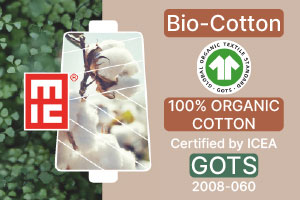
The reason for my presence in this course was the existence of a carding machine in the great factory of Ravand Kashan, and we had to pass this course to learn how to set up, repair and maintain this carding machine. At that time in Ravand Kashan, high-quality woollen machine-made carpets were produced and its woollen yarns were spun in the same factory. It was there that I became interested in wool fibers and their use in machine-made carpets and extensively researched about Iranian wool and its processing.
Unfortunately, at present, acrylic, polyester, polypropylene, and other man-made fiber carpets, which are all derivatives of oil and plastics, are filling our homes. Unfortunately, we can observe the results of using man-made machine carpets in increasing and growth of respiratory diseases, cancer, etc. In Iran, there is a sufficient amount of wool and we have 70,000 to 75,000 tons of sheep wool production annually, which is mainly obtained from livestock in Khorasan, Khuzestan, Azerbaijan, Sistan and Baluchestan and Kurdistan.
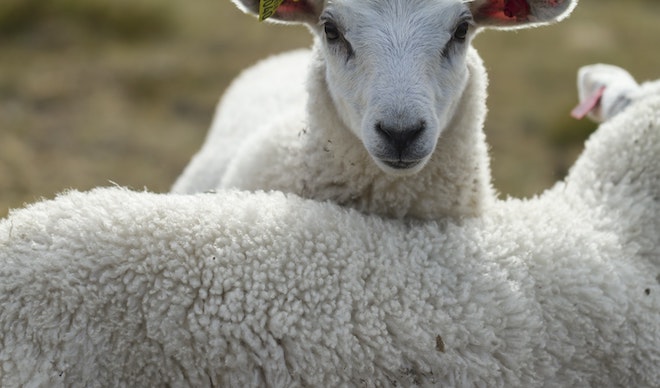
But Iranian wool has many impurities for several reasons, including racial mixing, improper forage and lack of breeding. For these reasons, Iranian wool has many dead fibers that cannot be spun and must be separated from the proper fibers.
Why is Iranian wool neglected and unused today, more than ever before?
Wool is a wonderful fiber with amazing properties. Each Iranian wool fiber is 34 to 36 microns thick and its structure is in the form of a protein chain.
Inside each fiber there are 20 to 25 thinner fibers, each is between one and two microns thick, and air bubbles move inside the fibre-like capsules, which create exceptional heat and cold insulation properties.
Since natural wool is the most compatible fiber with human nature, the importance of this valuable raw materials is revealed in the textile industry and handmade and machine-made carpets.
According to researches and performed studies, it is not possible to use native sheep wool fibers to spin fine yarns in semi-worsted systems, which mainly are used in weaving handmade carpets, and these fibers are converted into 2 to 5 metric yarns in woollen spinning systems.
The reason is the presence of dead and hairy, camp and medullary, and heterotype fibers that grow genetically along with wool fibers and have a different physical structure than real wool with a density of 1.32 g/cm3.
Extra, dead and hairy fibers must be separated from the fibers due to their shortness, fragility, non-curling, lack of coloring and also their large diameter and thickness.
Since sheep are kept for the purpose of producing meat and milk, and wool fibers have very little importance in Iran, there are many Modula and camp fibers, or dead fibers, inside the sheep fleece. Iranian sheep fleece weighing two to three kilograms containing 50% impurities, including animal excrement, plant impurities and dead fibers. Dead fibers are about 80 microns thick, which are brittle and are not dyeable. These fibers cannot be spun in semi-worsted systems and in woollen systems, they will separate from the yarn structure.
The destruction of the fiber and wool yarn industry in Iran has actually occurred due to two reasons including domestic recklessness and global water and energy problems. At present, in all countries all over the world, the issue of processing and production of high-quality wool yarn is a major issue.
To make this problem more tangible, it is better to briefly explain the process of wool exploitation. After removing wool from the sheep’s body and traditionally sorting wool fibers, animal waste along with all plant waste, dead fibers and healthy fibers, enter the washbasins. The wool fibers must be washed in warm water at 65℃ temperature with special detergent to remove the waste in several steps.
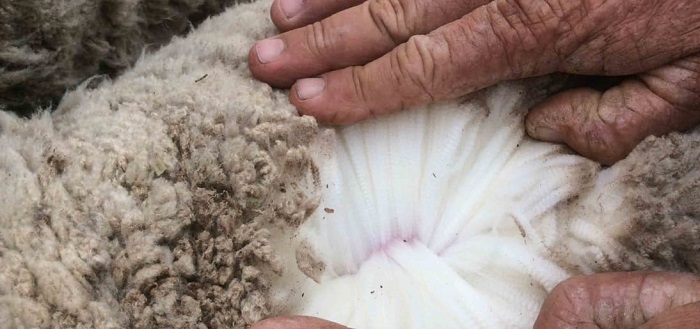
This process is seriously opposed by environmental organizations in the world today, because in addition to consuming too much water and c energy to heat water to a temperature of 65℃, there is a major problem with its effluents, which contain chemical residues and detergent which is added to water during the washing process.
For these reasons, many wool washing workshops have been closed, and even the European Union is seriously looking for alternative projects and innovations to eliminate wool washing workshops. Nowadays, nowhere in the world are wool washing units economically and environmentally friendly.
It is interesting to know that to wash one kilogram of wool, 17 kilograms of hot water 65℃ temperature is required, and this is exactly where our invention can work effectively.
Please explain more about this invention and its application in the wool industry.
After numerous researches, we have succeeded in inventing a system that can replace traditional wool washing systems with 80% less water consumption. More importantly, this invention can easily separate dead fibers and greatly increase the purity of wool. In this system, at first and without using water, only by creating electrical charges in wool fibers, we can easily separate high-quality wool fibers from the rest of the waste and dead fibers and produce many by-products.

First of all, plant and animal wastes are collected as chemical fertilizers because they can be separated dry. In addition, dead fibers, which are separated from high-quality fibers due to different density and electric charge, are used in the production of thermal insulation and industrial mats. Another valuable product called wool oil or wool wax, is produced lanolin and is widely used in the cosmetics industry. In this system, cleaned wool only needs one final wash and up to 80% of water consumption, energy and production of industrial effluents are reduced.
In fact, our most important task is to separate the dead fibers, which greatly increases the purity of the fibers. A 2.5 to 5 Nm yarn can be spun with dead fibers along with wool fibers, which is suitable for woollen spinning and so-called rug carpets and has a very low value. By separating the dead fibers, the purity of wool fiber is increased and it can be spun in the semi-worsted system to produce 5 to 25 Nm yarns, which are very suitable for the production of machine-made carpets and high-quality handmade carpets. Then we can offer woollen carpets to the market at a very cheap price, which will be much cheaper compared to acrylic carpets.
The production line of wool fiber reduction, which has been registered in Iran and Switzerland, has the ability to process wool fibers electrostatically with a capacity of 300 kg per hour with the following characteristics:
1- One of the most important features of this system is the separation of dead fibers and hairy fibers from real wool, which by increasing the purity of fibers and producing wool tops, provides the possibility of spinning fine yarns with a quality of 5 to 20 metric.
In addition, dead and hairy fibers can be recycled to be used in the thermal insulation industry and industrial felts as a by-product.
2 – Due to the fact that 80% of plant impurities and animal waste are separated dry in this method, waste is converted into agricultural fertilizer and returns to the natural cycle as a by-product.
3- Considering the reduction of effluent and water consumption to the minimum possible (80% reduction of water consumption) in order to degreasing wool fibers, economical extraction of laolin (valuable wool fat) which is one of the valuable materials in health and cosmetics industry, becomes possible.
Important points in this plan are:
1- Importance of energy and water consumption
2- Paying attention to the sources of natural raw materials and its optimal use
3- Paying attention to environmental problems
4- recovery of impurities and returning them to the cycle of nature
How did well-known countries in the production of sheep wool, such as Australia and New Zealand, solve these problems?
In countries such as Australia and New Zealand, sheep have been bred in a 150-year process, for the purpose of wool production. So, very professional and modern methods are used for picking the wool from the sheep’s body.
When a country, with effort and planning, can breed sheep in a long process, the amount of dead fibers in the sheepskin will be drastically reduced and the quality of the wool will be very high. Unfortunately, in Iran, due to low quality and lack of processing and attention to wool, a large volume is burned and buried because it is not beneficial for farmers. (Sheep wool must be cut once or twice a year so that the sheep does not get heavy and sweat.)
Considering the importance of your invention and the fact that it can revive the use of Iranian wool and the production of high-quality wool yarn, Is any attention paid to your invention, so far?
Unfortunately, in the last 20 years, we have made many efforts to convince the government and related organizations, but we have not succeeded so far. This project was patented at the Geneva Patent Center in 2002 and in Iran in 2001. It has also been implemented as a pilot in Shahrekord, which showed very good results.
Unfortunately, there is no will or decision to revive Iranian wool on a large and national scale, and due to lack of attention after decades, we seek to transfer this project to Sweden and Germany and implement our system there.
Unfortunately, the story of wool in Iran is very sad. Thousands of these valuable and strategic fibers are lost, while Iranian wool is the best fiber in the world for using in carpets and flooring. Even very good wool fibers were imported from New Zealand and Australia to be used in handmade carpets, which after a while became into felt. While more walking on Iranian wool makes the carpet brighter and more beautiful, due to its appropriate thickness, and the carpet can be used for many more years.
Our invention can process 300 kilograms of wool fiber per hour and 6 tons per day and about 2,000 tons per year. If 30 units with these characteristics are established in the whole country, especially in major production provinces, in addition to creating employment in villages and deprived areas and very high profitability, all Iranian wool will enter the process and thousands of tons of high-quality wool yarn will be produced.
With the production of various types of woollen yarns in the country, a machine-made carpet with natural and high-quality wool that is not harmful to the body will enter Iranian homes at a much cheaper price than acrylic, polyester, and other kinds of carpets.
Certainly, a very hot export market will be created for wool carpets. We must look at this issue from national point of view that wool fibers are important for our health, society and children, and we must not destroy this God-given blessing with our own hands. Finally, I would like to thank the Nassaji Kohan magazine for paying special attention to this issue.
National Standard No. 9489
Features of wool tops used in a carpet – Features
Type of fibers:
The fibers in the tops must be of new virgin wool fibers, not being pulled wool, which has been physically or chemically damaged by fungi, bacteria and insects.
Modular fibers:
The ratio of non-real wool fibers in the form of modular fibers is recommended up to a maximum of 10% of tops fibers.
Dead fibers:
The maximum allowable dead fiber (camp) in the tops is 4%.
The number of coloured fibers:
The ratio of colored fibers in white self-coloured tops should be 10 per 100 grams.
The number of plant wastes:
The maximum permissible plant waste is 40 per 100 grams tops.
Percentage of moisture regain:
The percentage of commercial moisture regain of tops based on the fineness of the fibers should be a maximum of 16.5%.
Number of neps:
The maximum number of allowed neps should be 40 per 100 grams of tops.
Average fiber diameter:
The minimum average diameter of wool fibers in carpet tops is 26 microns and the maximum coefficient of variation is 46%.
Average fiber length:
The average length of wool fibers tops used in carpet is 80 mm and the maximum coefficient of variation of length is 50% for fibers longer than 80 mm, and 6% for fibers shorter than 50mm.
Wool tops are the raw material of semi-worsted units, which can also produce finer yarns than 15 Nm.
Do you need more information and details:
Whatsapp: +905392346324
Email: [email protected]



